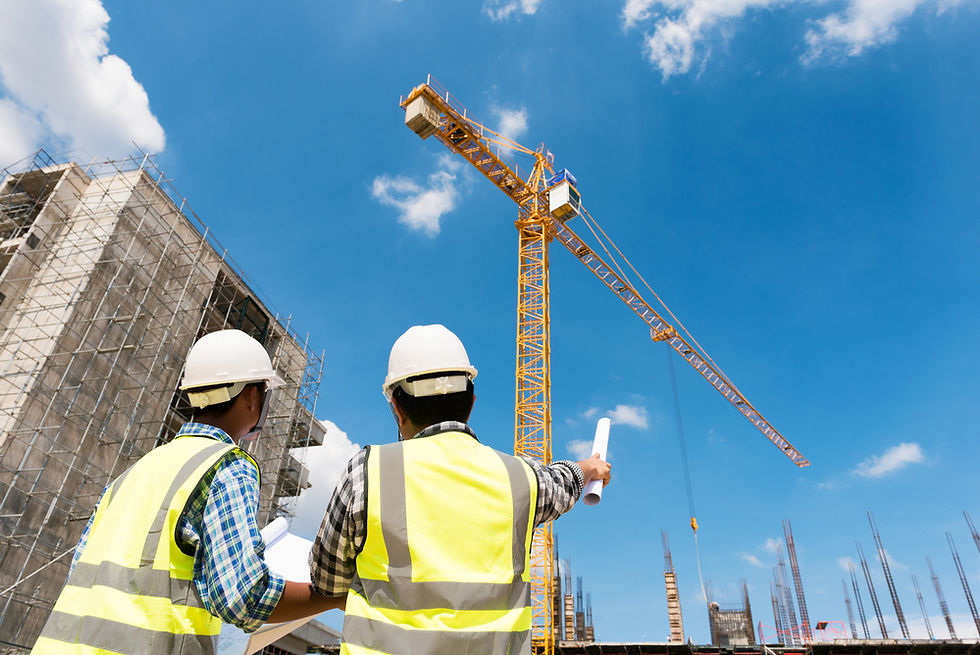The Evolution of Structural Engineering
- Amelia Varley
- Feb 7
- 3 min read
Updated: Nov 3
Whether you're an industry veteran, an emerging architect or simply an interior design enthusiast, you can't help but be intrigued by the rapid influx of technological advancements in the realm of structural engineering. How are these groundbreaking innovations influencing the design and efficacy of buildings? Are they merely flashy novelties, or do they promise enhanced safety, efficiency, and affordability? These questions, and more, nestle at the crux of our discourse today as we delve deep into the sphere of structural engineering services, their transformation, and subsequent impact, courtesy of innovative technologies.

The architectural stage has always been a hotbed for creativity and innovation. As architects and structural engineers, we wield the power not just to create stunning visual aesthetics, but also structures that stand robust and resilient against the changing times. As our understanding and capabilities evolve, so too do our tools. And in this relentless pursuit of the new and improved, innovative technologies are leading the charge.
In this journey we traverse today, we will decode how new-age tools like Augmented Reality (AR), Virtual Reality (VR), Building Information Modelling (BIM), 3D printing, and more, are revolutionising the landscape for architectural design and structural engineering services, and what it means for future developments.
Dissecting the Intervention of Technology in Structural Engineering
When we talk about technology interventions in structural engineering, it is not merely about computer-based graphics or sophisticated drawing tools. It is about a deeper evolution, one that infuses business processes, project management, design interpretations, and ultimately, the execution of architectural masterpieces.
The first innovation that wears the crown of disruption is Building Information Modeling (BIM). This advanced protocol transforms the manner in which building projects are conceived, planned, designed, and managed. It's a holistic approach, remarkably different from conventional design methods, offering multidimensional, digital representational models that facilitate enhanced collaboration, accurate cost predictions, and subsequently, reduced construction errors.
The Immersive World of AR and VR in Architectural Design
Emerging technologies like AR and VR are revolutionizing the design phase of structural engineering. These tools immerse the users in a lifelike, virtual environment, allowing them to visualize and experience the finalized construction even before a single brick is laid. No longer do you have to grapple with flat, insipid blueprints. With AR and VR, you can walk through the corridors of your future home, even customizing decor elements to suit your taste.
Boundless Potential with 3D Printing and Prefabrication
3D printing, coupled with the prefabrication technique, has been a game-changer in delivering swift and affordable construction solutions. It reduces waste generation, leverages recycling opportunities, and ensures cost-efficiency, rising as a sustainable alternative in the construction realm. As technology continues to perfect this art, we are looking at a future where the on-site construction process could become obsolete.

Smart Buildings: Integrating IoT and AI
Smart homes and intelligent architecture are no more figments of sci-fi novels. IoT (Internet of Things) and AI (Artificial Intelligence) deliver real-time data tracking, ensuring optimal energy utilization, predictive maintenance, and enhanced security systems, making buildings safer, sustainable, and cost-effective.
Potential Drawbacks of Innovative Technologies
Every coin has two sides and while we have been singing paeans for innovative technology, it also has its drawbacks. These include a steep learning curve for traditional engineers, potential redundancy of manual jobs, and high initial setup expenditure. Moreover, technology glitches can also lead to costly errors or delays in construction.
The Regulatory Prism
One cannot sidestep the inevitable discourses on regulatory challenges that these new technologies pose. From complying with ever-evolving building codes, safety rules, and data protection norms, the road to seamless digital transformation is strewn with legislative challenges.
In Conclusion: Human Ingenuity Combined with Digital Revolution
There's no denying that the interplay of advanced technology and structural engineering services has redefined architectural paradigms. From a more profound understanding of design-construction interfaces to seamless project management and cost-efficient execution, the benefits are manifold. However, it's equally essential to address the challenges head-on.
Indeed, as we stand on the threshold of this digital revolution, the onus is on us - the architects, engineers, designers, and consumers - to strive for that perfect symphony of human ingenuity and technological brilliance: where the line between the virtual and real blurs, where sustainable solutions are the norms, not the exception, and where each building stands testament to the evolving genius of human creation.
Undoubtedly, the advent of innovative technologies in structural engineering might pose certain challenges, but the unique prospects it opens up for creating efficient, sustainable, and aesthetic structures, far outweighs the hurdles. Embrace the change, and together, let's orchestrate a future filled with designs that are as unique as they are enduring.









Comments